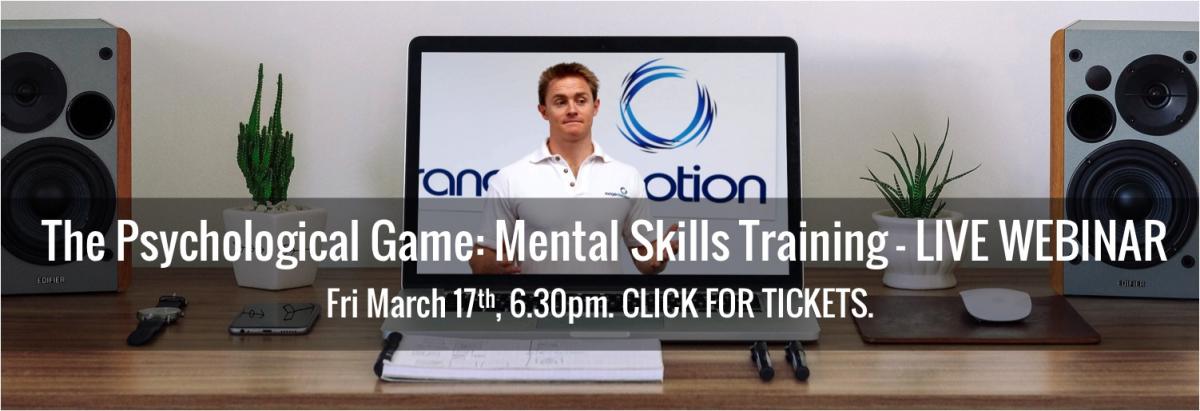This is part of a five part series on Psychological Skills Training, covering the education, acquisition and practice of psychological skills.
Other posts in this series include:
- Imagery – Psychological Skills Training
- Self Confidence – Psychological Skills Training
- Goal Setting – Psychological Skills Training
- Concentration – Psychological Skills Training
Education:
- Arousal is the level of physical and psychological activation, on a scale from deep sleep to intense excitement.
- Moderating arousal levels can help to control stress and anxiety.
- Arousal levels affect performance negatively and positively.
- Inverted U model shows the relationship between performance and arousal. This model is specific to the individual, and specific to the task, so the inverted U is not always symmetrical. Ideal performance state or ‘the zone’.
- Arousal affects performance due to:
- Muscle tension and coordination difficulties with excessive arousal. 400m runners record faster times when told to run at 95% than they do when told to run at 110%.
- Attention and concentration narrows with increased arousal.

 Different tasks have different optimal levels of arousal. When an individual is optimally aroused for a particular task they are said to be in an ‘Ideal Performance State’ (IPS), the ‘Zone of Optimal Functioning’ or colloquially, ‘In the Zone’ or ‘Flow’. Being able to place yourself in ‘The Zone’ increases performance.
Different tasks have different optimal levels of arousal. When an individual is optimally aroused for a particular task they are said to be in an ‘Ideal Performance State’ (IPS), the ‘Zone of Optimal Functioning’ or colloquially, ‘In the Zone’ or ‘Flow’. Being able to place yourself in ‘The Zone’ increases performance.
The relationship between task type and optimal level of arousal is shown below.

Acquisition:
- Identify the optimal level of arousal for a task.
- Recognise factors that influence arousal levels.
- Recognise signs of under/over arousal.
- Under-aroused:
- Moving slowly.
- Mind wandering.
- Lack of concern about performance.
- Lack of anticipation or enthusiasm.
- Feeling heavy, no ‘bounce’.
- Over-aroused:
- Awkward, jerky, uncoordinated movements.
- Excessive muscle tension.
- Negative thoughts.
- High breathing/heart rate.
- Under-aroused:
- Tailor training and competing practices to the individual.
- Build confidence.
Practice:
Strategies to control arousal levels should be specific to whether it’s physical (somatic anxiety) or mental (cognitive anxiety).
- Arousal inducing techniques:
- Increase breathing rate.
- Act energized.
- Use mood words and positive statements.
- Listen to music.
- Use energizing imagery.
- Complete a pre-competitive workout.
- Arousal reduction techniques:
- Somatic:
- Progressive relaxation: Flexion then relaxation of a muscle: teaches the difference between tension and relaxation, teaches that a muscles can not be both relaxed and tense at the same time, teaches the release of mental tension.
- Breath control: Rhythmic diaphragmatic breathing.
- Cognitive:
- Relaxation response (meditation):
- No distractions.
- Comfortable position.
- Mental device (repeating a word or thought, eg counting).
- Passive attitude: Allowing thoughts without attending to them.
- Relaxation response (meditation):
- In-competition relaxation tips:
- Smile.
- Have fun, enjoy the situation.
- Set up stressful situations in practice.
- Slow down, take your time.
- Stay focused on the present.
- Be prepared with good strategy/game plan.
- Somatic:




